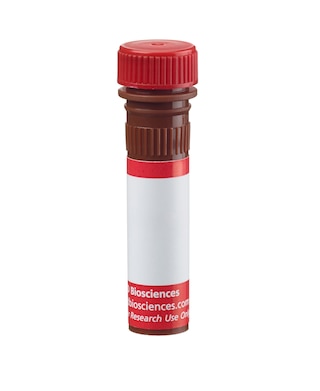-
Your selected country is
Middle East / Africa
- Change country/language
Old Browser
This page has been recently translated and is available in French now.
Looks like you're visiting us from {countryName}.
Would you like to stay on the current country site or be switched to your country?




Flow cytometric staining profile of Alexa Fluor® 647 Rat Anti-Mouse CD193 on mouse CCR3- transfected L1.2 cells. Mouse CCR3-transfected L1.2 cells (open histogram) or wild type L1.2 cells (shaded histogram) were stained with Alexa Fluor ® 647 Rat Anti-Mouse CD193 antibody (clone 83103; Cat. No. 557974).


BD Pharmingen™ Alexa Fluor® 647 Rat Anti-Mouse CD193

Regulatory Status Legend
Any use of products other than the permitted use without the express written authorization of Becton, Dickinson and Company is strictly prohibited.
Preparation And Storage
Product Notices
- Since applications vary, each investigator should titrate the reagent to obtain optimal results.
- An isotype control should be used at the same concentration as the antibody of interest.
- Alexa Fluor® 647 fluorochrome emission is collected at the same instrument settings as for allophycocyanin (APC).
- Alexa Fluor® is a registered trademark of Molecular Probes, Inc., Eugene, OR.
- The Alexa Fluor®, Pacific Blue™, and Cascade Blue® dye antibody conjugates in this product are sold under license from Molecular Probes, Inc. for research use only, excluding use in combination with microarrays, or as analyte specific reagents. The Alexa Fluor® dyes (except for Alexa Fluor® 430), Pacific Blue™ dye, and Cascade Blue® dye are covered by pending and issued patents.
- Caution: Sodium azide yields highly toxic hydrazoic acid under acidic conditions. Dilute azide compounds in running water before discarding to avoid accumulation of potentially explosive deposits in plumbing.
- For fluorochrome spectra and suitable instrument settings, please refer to our Multicolor Flow Cytometry web page at www.bdbiosciences.com/colors.
- Please refer to www.bdbiosciences.com/us/s/resources for technical protocols.
Companion Products





The 83103 monoclonal antibody specifically binds to CD193, which is also known as, C-C chemokine receptor type 3 (CCR3). CD193 is a chemokine receptor for CCL11/eotaxin, CCL24/eotaxin-2, CCL26/eotaxin-3, CCL5/RANTES, CCL7/MCP-3, CCL8/MCP-2, CCL14/MCP-4, CCL15/HCC-2 and CCL3/MIP-1a. CD193 is reportedly expressed on eosinophils, mast cells and Th2 cells. It plays an important role in eosinophil recruitment to the skin and the lung and in the development of airway hyperresponsiveness.
Development References (2)
-
Ma W, Bryce PJ, Humbles AA. CCR3 is essential for skin eosinophilia and airway hyperresponsiveness in a murine model of allergic skin inflammation. J Clin Invest. 2002; 109(5):621-628. (Biology). View Reference
-
Teixeira MM, Wells TN, Lukacs NW. Chemokine-induced eosinophil recruitment. Evidence of a role for endogenous eotaxin in an in vivo allergy model in mouse skin. J Clin Invest. 1997; 100(7):1657-1666. (Biology). View Reference
Please refer to Support Documents for Quality Certificates
Global - Refer to manufacturer's instructions for use and related User Manuals and Technical data sheets before using this products as described
Comparisons, where applicable, are made against older BD Technology, manual methods or are general performance claims. Comparisons are not made against non-BD technologies, unless otherwise noted.
For Research Use Only. Not for use in diagnostic or therapeutic procedures.
Report a Site Issue
This form is intended to help us improve our website experience. For other support, please visit our Contact Us page.